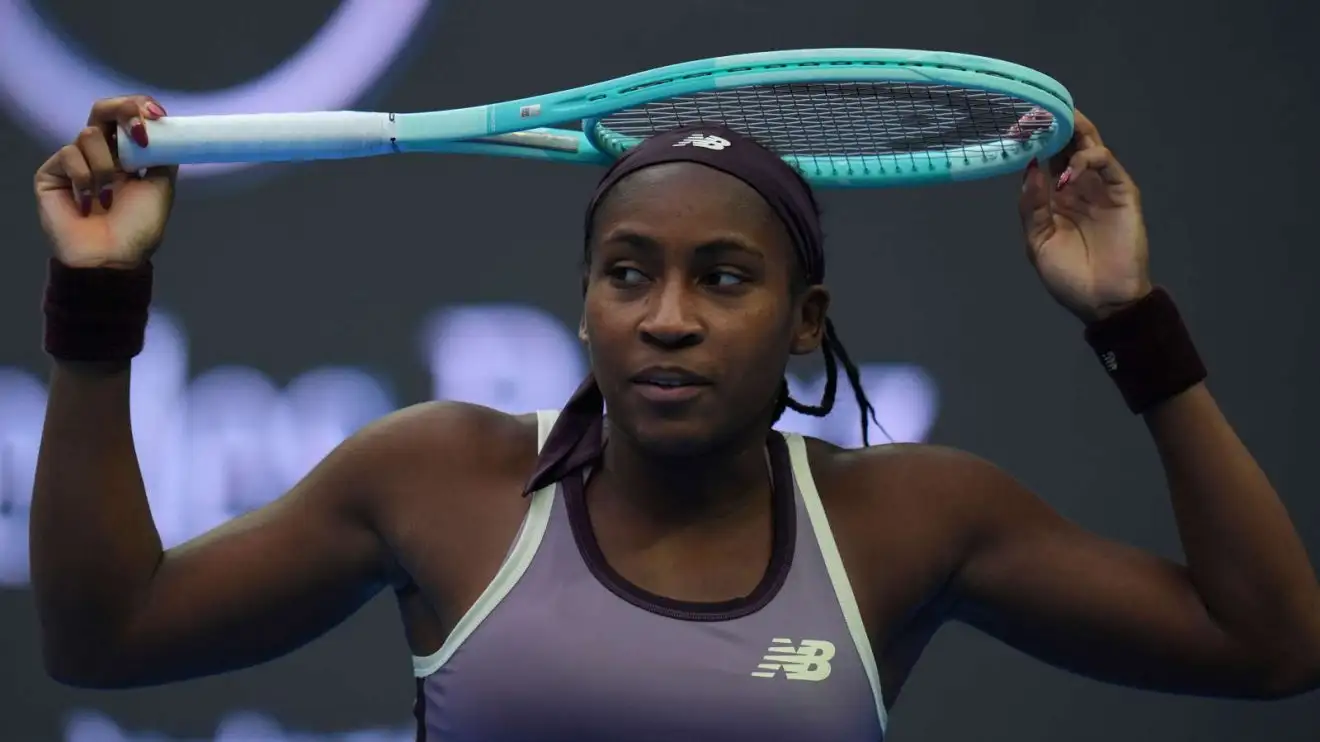
At just 21 years old, Coco Gauff has already carved out a remarkable career on the tennis court, captivating fans with her explosive athleticism, mental toughness, and unrelenting drive. With a U.S. Open title under her belt and a career-high ranking of No. 2 in the world, Gauff’s potential seems limitless. Yet, as she continues to ascend, one aspect of her game remains a persistent hurdle: her serve. A former world No. 1 recently weighed in on this issue, stating bluntly, “Coco Gauff’s serve is going to be a problem forever.” This candid assessment has sparked discussions about whether Gauff can overcome this technical flaw or if it will define the boundaries of her otherwise stellar career.
Gauff’s serve has long been a topic of scrutiny. Unlike her lightning-fast footwork or powerful groundstrokes, her service motion lacks the fluidity and consistency expected of a player of her caliber. The issue became glaringly apparent during her recent straight-sets loss to Donna Vekic at the WTA Finals in Riyadh. Gauff struggled to find rhythm, managing only 37% of her first serves in play and committing eight double faults. These statistics paint a troubling picture for a player competing at the elite level, where precision and reliability are non-negotiable. The defeat marked her third consecutive loss at the year-end championships, amplifying concerns about her ability to address this critical weakness.
The former world No. 1’s comment wasn’t meant to diminish Gauff’s talent but rather to highlight a technical challenge that has persisted despite her meteoric rise. “She’s one of the best athletes we’ve ever seen in the sport,” the former champion noted, praising Gauff’s speed and competitive spirit. “But the serve is a mechanical issue, and it’s not something you just fix overnight.” Indeed, Gauff’s athleticism allows her to compensate for service struggles in other areas, often outrunning opponents and dominating rallies with her aggressive baseline game. However, against top-tier players, a shaky serve can be a liability, giving opponents opportunities to seize control of points early.
Gauff herself has been open about her struggles, displaying the self-awareness that has endeared her to fans and analysts alike. “I know my serve needs work,” she admitted after a recent match. “It’s frustrating because I feel like I’m so close to getting it right, but it’s just not clicking yet.” Her candor reflects a maturity beyond her years, but it also underscores the complexity of the issue. Revamping a serve is no small feat—it requires retraining muscle memory, refining technique, and maintaining confidence under pressure. For Gauff, who has been in the spotlight since her breakout performance at Wimbledon at age 15, making such adjustments while competing at the highest level is a daunting task.
Despite these challenges, there’s reason for optimism. Gauff has shown resilience in other areas of her game, transforming her forehand from a vulnerability into a weapon through dedicated practice. Her work ethic is legendary, and she’s surrounded by a strong support team, including coaches who have guided her to Grand Slam success. The former No. 1 acknowledged this, saying, “If anyone can figure it out, it’s Coco. She’s got the heart and the hunger to keep pushing.” History offers plenty of examples of players who have overcome technical flaws—think of Rafael Nadal, who refined his serve to complement his relentless baseline game, or Maria Sharapova, who battled double faults but still claimed five Grand Slam titles.
The broader context of Gauff’s career adds nuance to the conversation. At 21, she’s still developing, and her accomplishments already outshine those of many seasoned veterans. Her U.S. Open triumph in 2023 cemented her as a Grand Slam champion, and her ability to compete against players like Iga Swiatek and Aryna Sabalenka proves she belongs among the elite. Yet, the WTA Finals loss to Vekic was a reminder that consistency is key to staying at the top. Gauff’s serve faltered under pressure, allowing Vekic to capitalize and secure a 6-4, 6-4 victory. For Gauff to dominate in 2025 and beyond, addressing this issue will be critical.
Looking ahead, Gauff’s journey is one of balance—leveraging her strengths while tackling her weaknesses. The tennis world is rooting for her, not just because of her talent but because of her authenticity and determination. She’s a player who wears her heart on her sleeve, whether she’s celebrating a hard-fought win or reflecting on a tough loss. “I’m not going to stop working,” Gauff vowed after her recent defeat. “I know what I’m capable of, and I’m going to keep going.” That mindset, coupled with her undeniable skill, suggests that her serve, while a problem now, won’t define her legacy.
As Gauff prepares for the next chapter of her career, the question isn’t whether she’ll succeed—she’s already proven she can. The real intrigue lies in how she’ll navigate this challenge, turning a weakness into another testament to her resilience. For now, her serve may be a work in progress, but Coco Gauff’s story is far from finished.
Leave a Reply